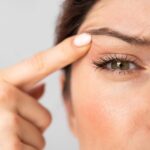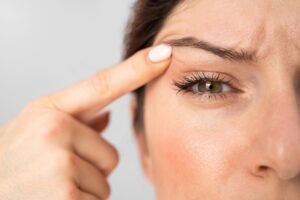Eye health,Ophthalmology houston

We have all been there. That annoying twitch. Why does it happen? For many of us, it happens on and off. We get this question at Slade & Baker Vision quite a bit – so we wanted to address it in our blog.
Your eyelid twitch is referred to as an ‘Eyelid spasm’ and most commonly is comprised of some involuntary, non-controllable, muscle contractions of the eyelid. These are called eyelid myokymia, and most of the time, we find them to be contractions of the lower lid.
These spasms usually affect only one eye since everything starts in the muscle around the eye and has nothing to do with our blink reflex; the nerve that affects us blinking would cause the twitch to happen to both of our eyes at the same time.
As many of you may notice, they can go on for a couple of hours, days or even as long as months!
According to Dr. Slade, ‘although some patients may believe they are serious, they usually are not serious. It’s annoying, and we usually tell patients, to ignore it, unless there are other symptoms that they notice. If there is twitching in other parts of your face or you notice your eyelid drooping that is a sign that something may be more serious and needs to be evaluated.’

What’s difficult is that we don’t know why these spasms happen. We believe it may come from a small irritation like the rubbing of a contact lens, but for the most part, as it has been documented in the recent NY Times Article about eyelid twitching, these eyelid spasms could be caused by dry eyes, by lack of sleep or could come from too much caffeine. Interestingly enough, studies have indicated that due to digital devices, like our tablets and iPhones, we blink less, and this makes our eyes feel dry.
How do we fix these?
Unfortunately, there really is no ‘treatment’ per se, but we do know that eyedrops that lubricate our eyes can help.
Our doctors at Slade and Baker always suggest our patients use preservative-free artificial tears. We also recommend more rest, less caffeine and less stress, but those are not always as easy to accomplish!
Other relieving options include covering your eyes with a warm washcloth that you dampen with water to cover your eyes or even a quick eye massage with some steam in or around shower time. The goal from these is to relax your eye muscles and get the glands open to exacerbate oil flow into your eyes which makes your tear evaporation slow down.
A well-balanced diet is also believed to help as mineral imbalances can lead to the spasms.
Very rarely, in some severe cases, a physician my inject a toxin (like Botox) into the muscle that surrounds the eyelid to stop the twitching. However, the reality is that most of us will end up drinking some more water and waiting it out – so although there are no ‘real’ answers as to why these happen, we still like to teach our patients and followers more about them so those that get them pretty regularly can rest assured, if there are no other symptoms, they are usually in the clear.
If you have any questions, feel like you have been feeling these for an extended period of time and would like a professional to take a look to make sure nothing serious is lurking, we are happy to schedule you with one of our eye doctors at Slade & Baker Vision. Call us at 713-626-5544 or email us at info@visiontexas.com today!





